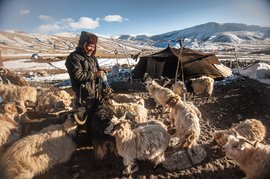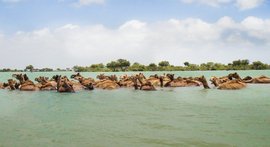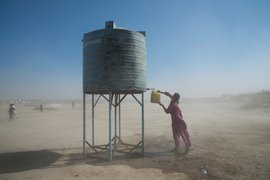It is possible to travel across Ladakh because of a network of high-altitude roads in this immense region, most of them projects of the Border Roads Organisation. Many of the labourers who build these long mountain roads are migrants from Bihar, Chhattisgarh and Jharkhand. They come here from May to mid-October every year, ensuring ever-more connectivity for the military to transport supplies, for tourists, and for the people of Ladakh.
I went to Chilling, around 55 kilometres from Leh city, a few weeks ago. The under-construction Leh-Padum highway, which will provide year-long access to the Zanskar Valley when the snow-bound Pensi La pass is closed for six months during winter, passes through Chilling. I planned to stay with the labourers in their tents for a few nights.
The 11 by 8.5 feet canvas tents are overcrowded, home to 6-7 men for six months. They sleep on bare rugs on the cold ground, their bags, utensils and other items taking up space too. The tents are usually pitched 1-2 kilometres from the work sites, and are re-pitched as the workers move along the road construction route.
I was unable to manage more than one night in a tent. The wind, dust and cold – it can drop to zero degrees Celsius at night even in the summer – inside the tent is nearly unbearable.
So I kept visiting them at various other work sites in Ladakh (not just at the under-construction highway) during the day. Daytime is difficult too. The summer temperatures can rise to 35 degrees Celsius and the direct mountain sunlight is harsh. The Ladakh region is spread across altitudes ranging from 11,000 to 18,000 feet. The air is thin. The strenuous labour of building roads in this low-oxygen terrain can be extremely difficult for someone from the plains – and even for locals. The work includes digging the soil, and carrying heavy loads of mud and stones. The men work for around 10 hours a day, six days a week, for a daily wage of Rs. 350 to Rs. 600, depending on the task and level of experience.
A group of workers from Bihar and Chhattisgarh near Chumathang village, on the bank of the Indus river, told me, "We don't have enough safety gear [only a few wear helmets, boots and goggles]. The Indian army has provided some warm clothing for the nights. There's a scarcity for drinking water too at the work site.”
I met Bhakat Ram Surji, around 50, near Chushul village, working to build a small bridge across the Indus. He is from Jharkhand, and had been in Ladakh for five months. He has been coming here for four years, but, he says, “I dislike working here. The wage is low and the work is difficult. Some road work is so risky that I don’t know if I will see sunrise the next day. I keep thinking I won’t be back again next year. But I come back. I have to because at home there’s nothing I can do consistently for six months”.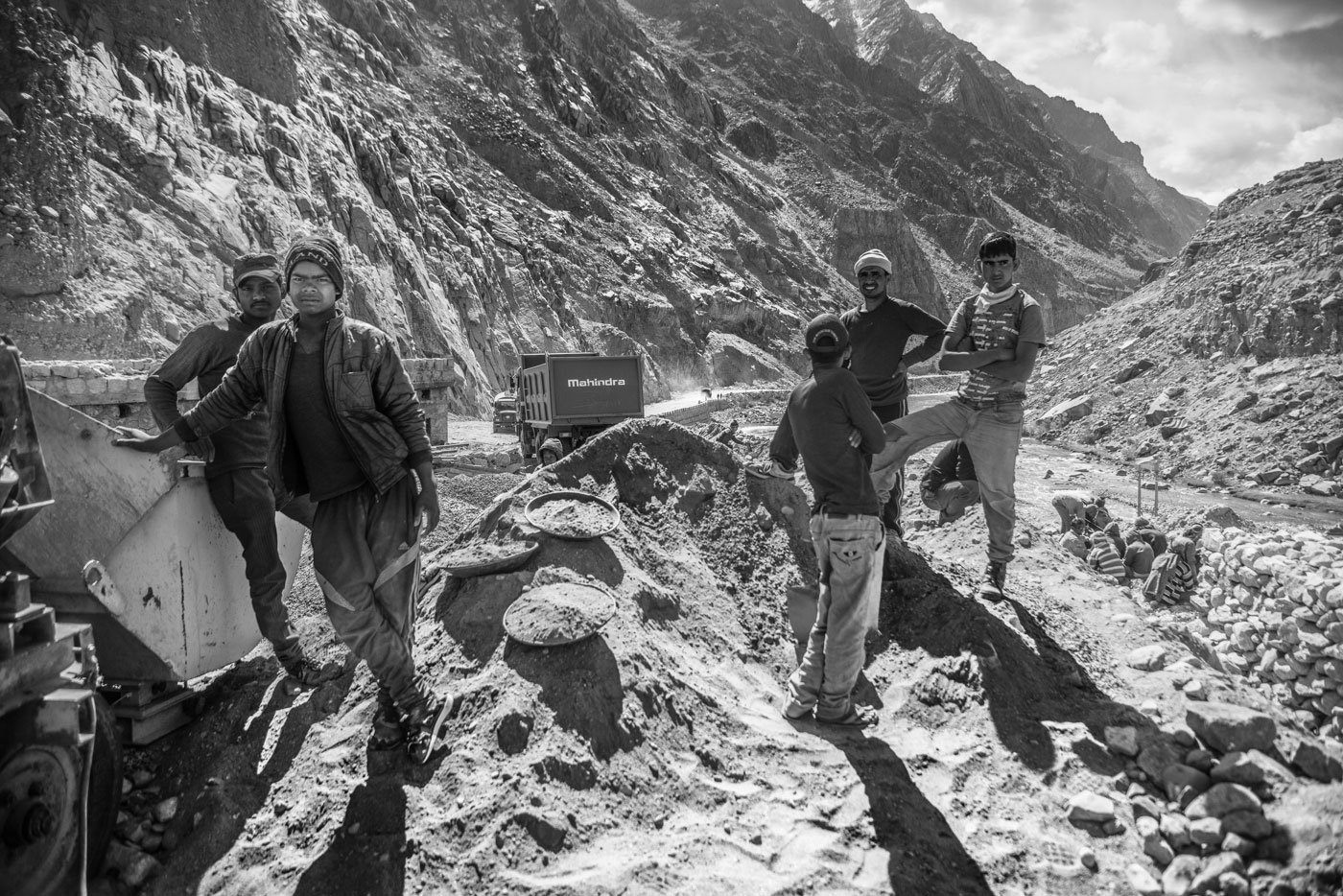
Many of the labourers who build roads across the mountains in Ladakh are migrants from Bihar, Chhattisgarh and Jharkhand; they work from May to mid-October in extremely difficult high-altitude terrain
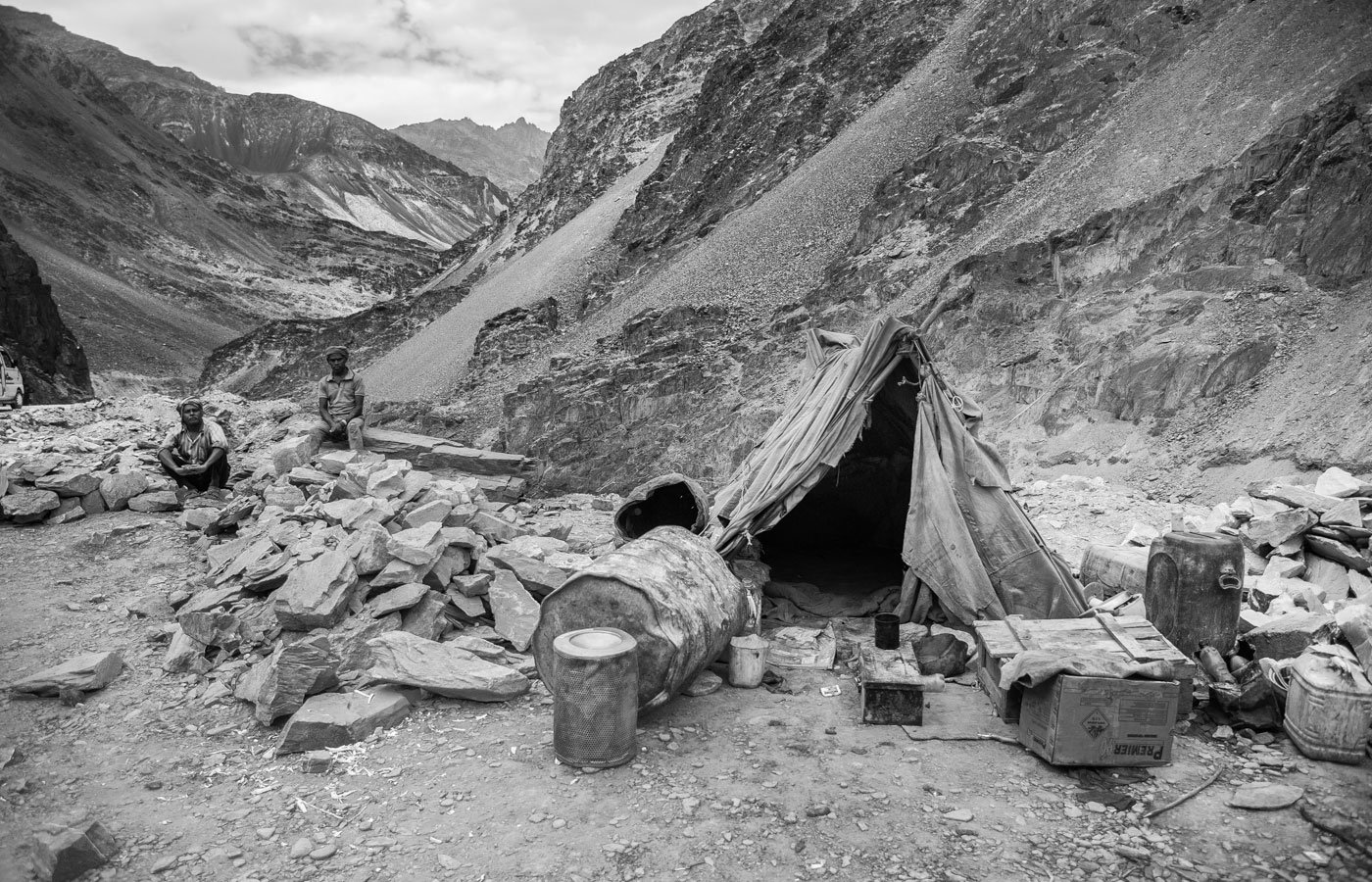
Jiten Murmu (left) from Bihar, with a co-worker, waiting outside their tent near Chilling village for lunch to arrive from another camp site. The canvas tents barely protect the workers during the cold nights. They camp by the roadside and follow the road works as they advance
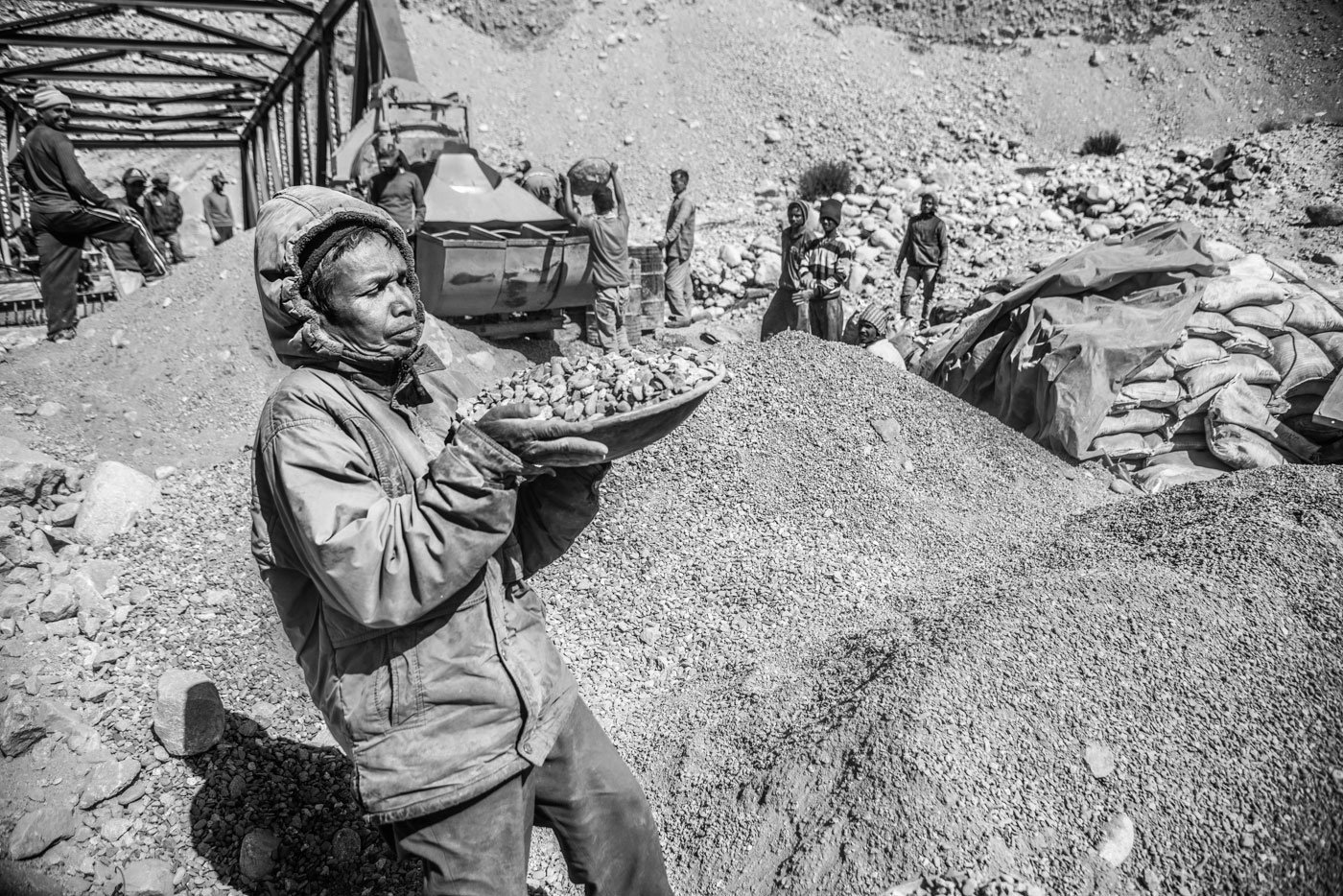
The high-altitude roads in Ladakh are mostly built by manual labour – heavy equipment is sparse. The workers have hardly any safety gear, and use cloth, not masks, to cover their faces against the massive dust. They carry heavy loads on their backs at high altitudes in the low-oxygen air, and have to sit down to catch their breath every now and then
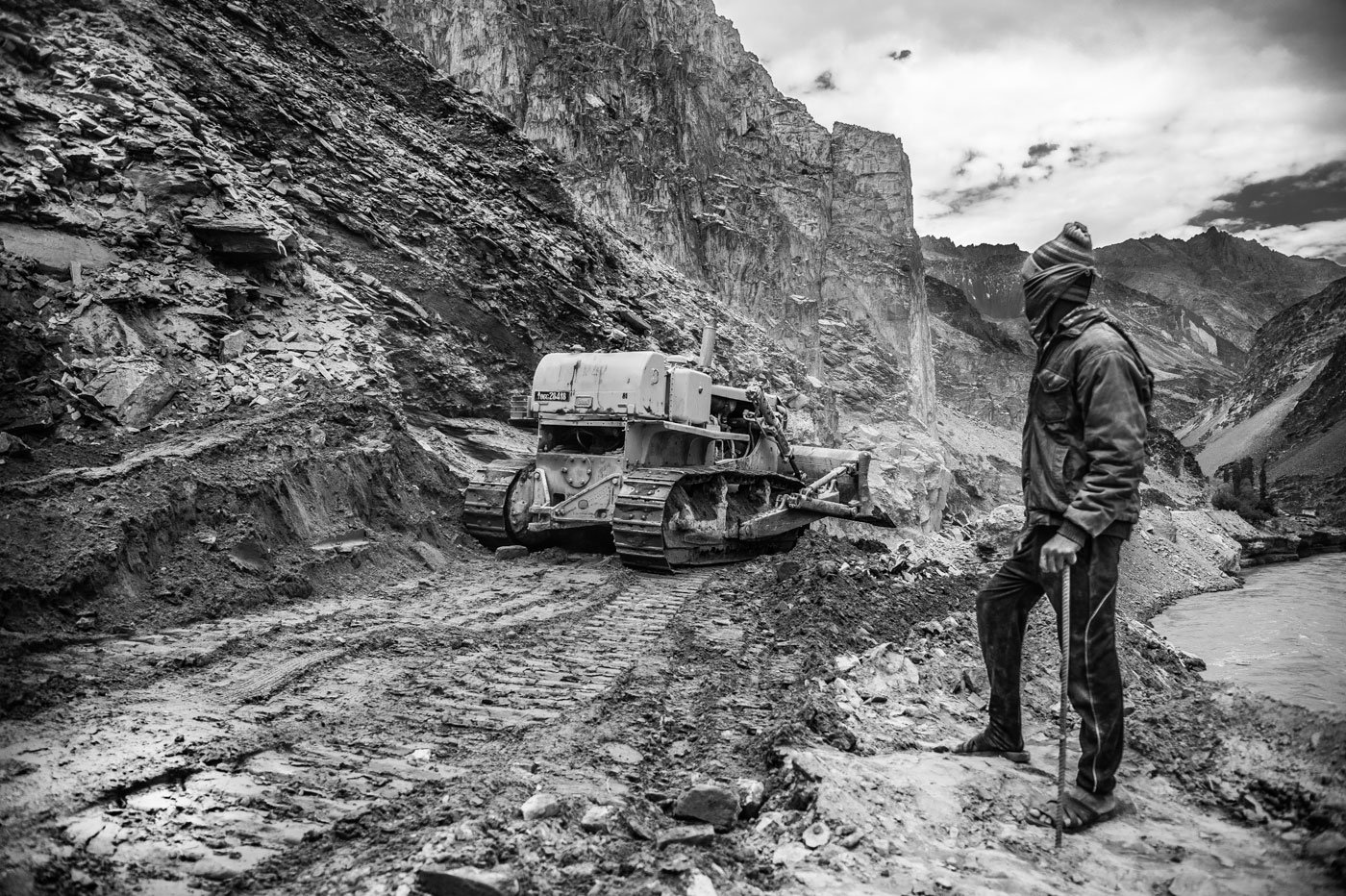
Prakash Singh from Bihar observing the construction of the Leh-Nimo-Chilling-Padum highway
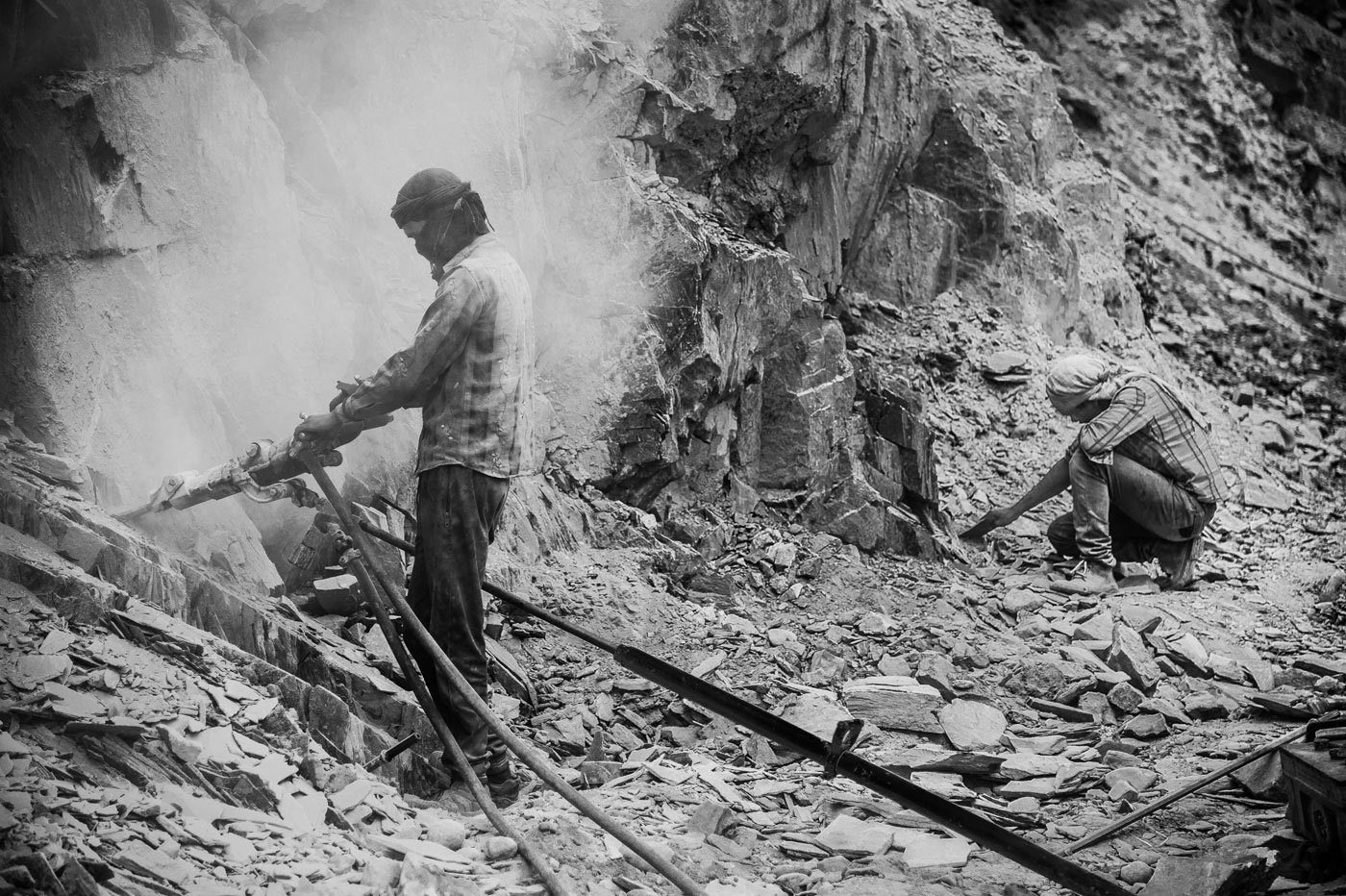
Using a drilling rig, a worker is widening the road in a mountain around 50 kilometres from the famous Lamayuru monastery – inhaling dust constantly in thin air where it can anyway get difficult to breathe
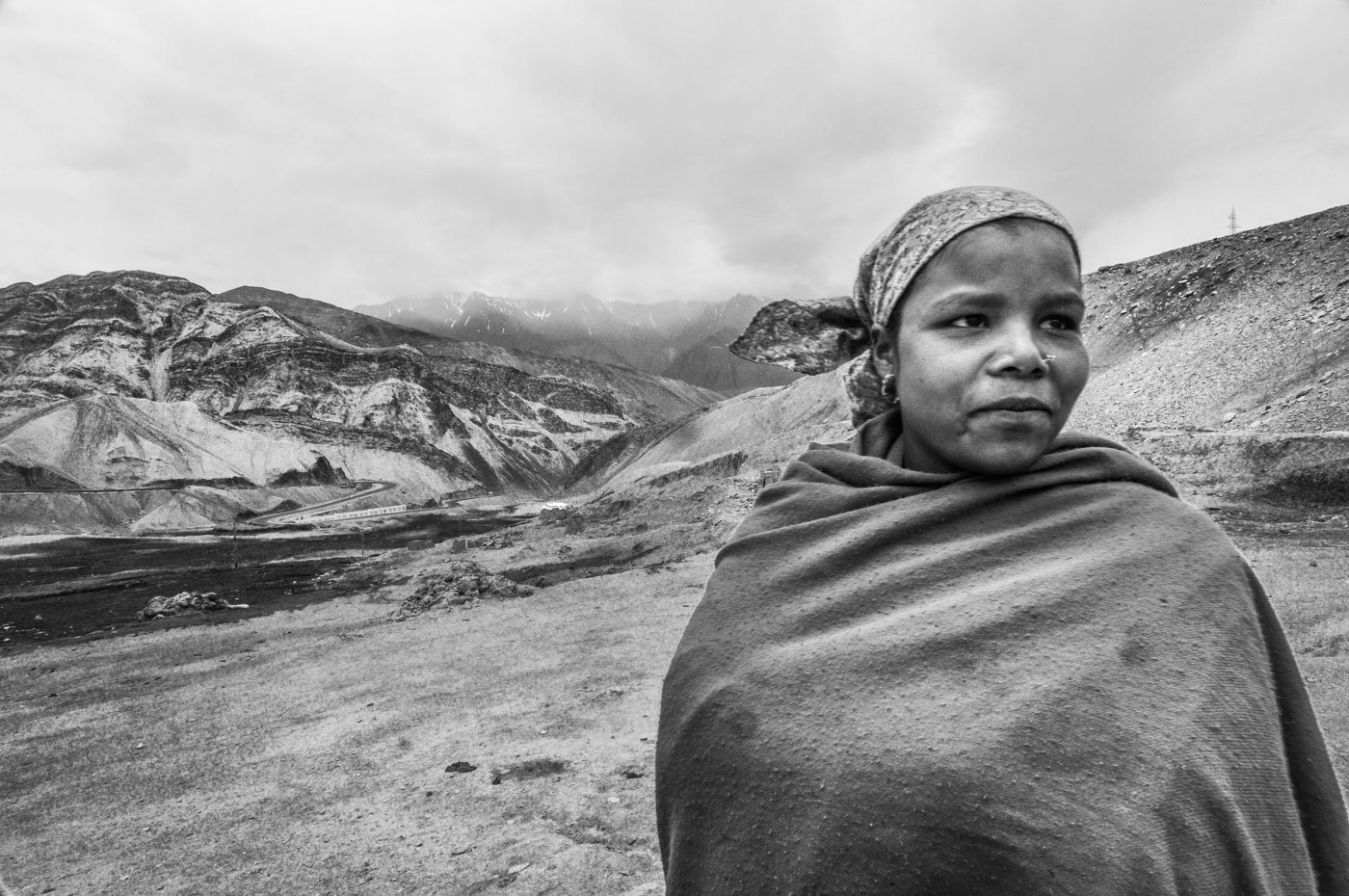
Sandhya Rani Murmu is from Jharkhand, among the few women at the work sites; she has come to visit her brother, she says, and is pitching in with the road building near Durbok village, between the Chang La pass and Tagste. Mud slides are common at Chang La, so there's a constant need for labourers
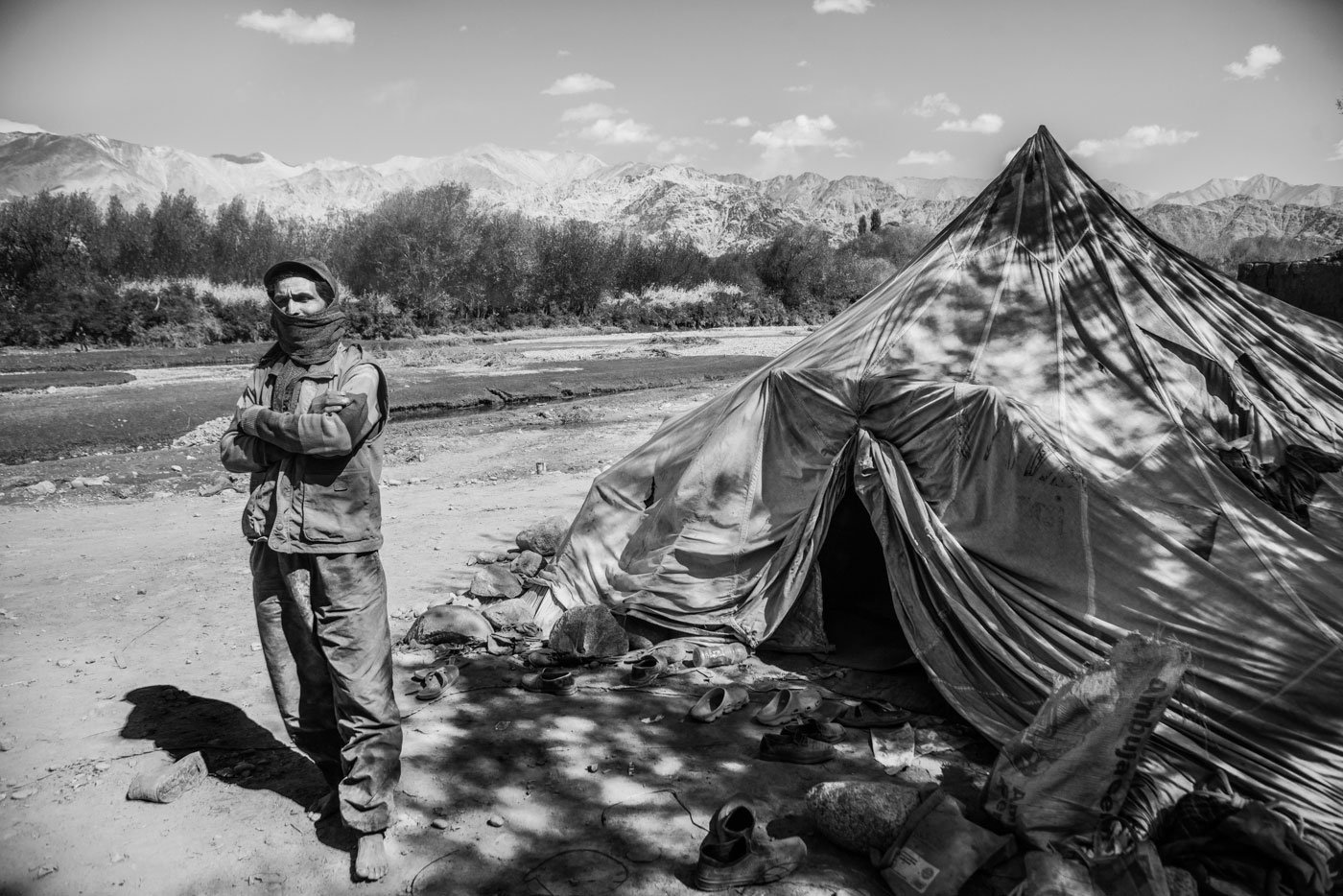
Bir Bahadur is from Nepal. Every summer, he comes to Ladakh for six months to build roads. This time, a contractor from Chandigarh gave him this job. He stays in a tent along with five other workers from Nepal
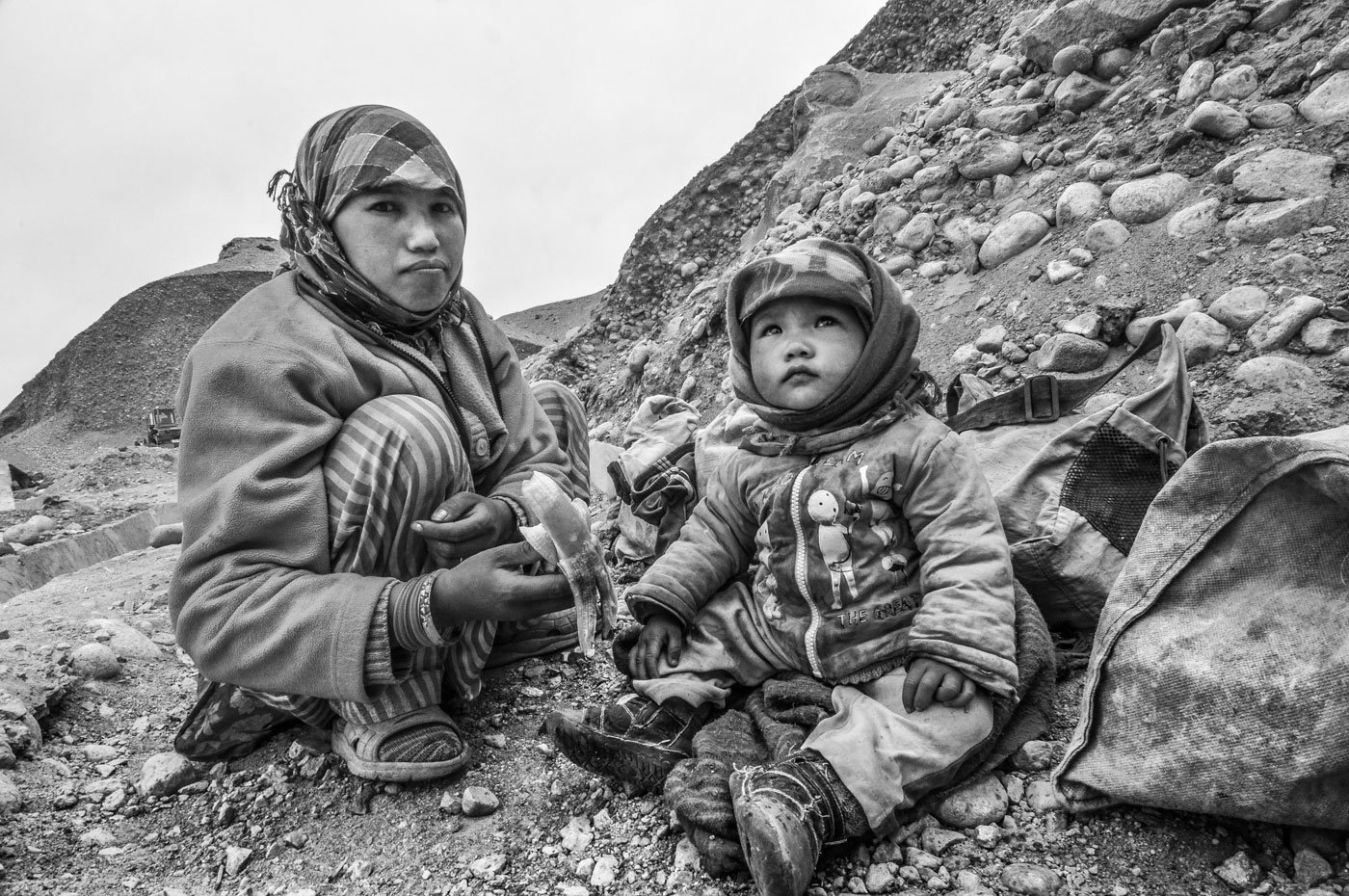
Pema brings her three-year-old son Ngodup to work. They live near Lukung village, close to Pangong Tso lake in eastern Ladakh. A few Ladakhi families also work along with the migrants to build the roads
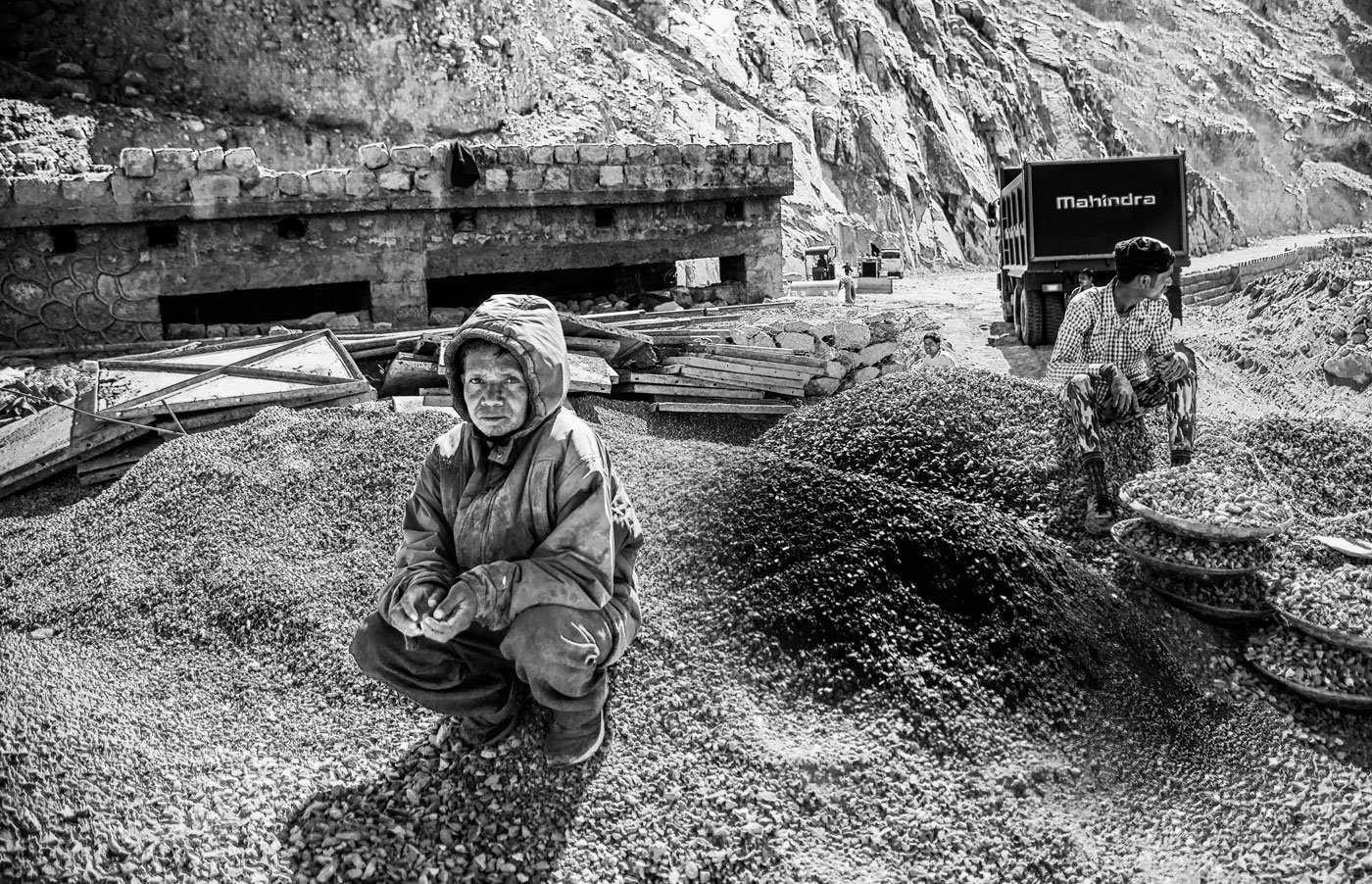
Santosh Topno, from Jharkhand, was working on building a bridge near Chumathang, and taking a short break
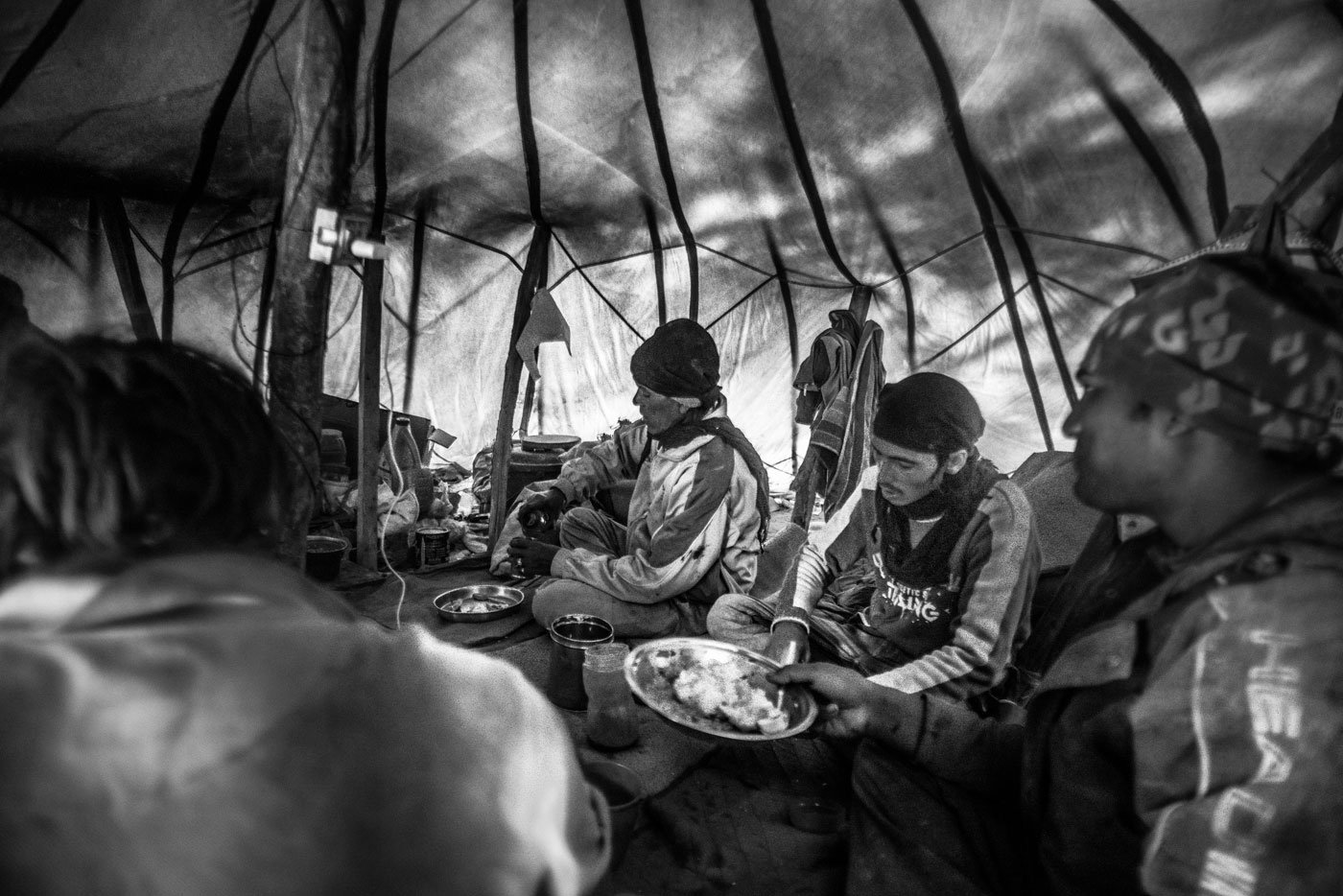
Migrant workers having lunch inside a tent at Chushul village, about an hour’s drive from Leh. Lunch break lasts for an hour. The food is basic, barely adequate for the harsh climate – rice, dal and some vegetables cooked on a stove in their tents
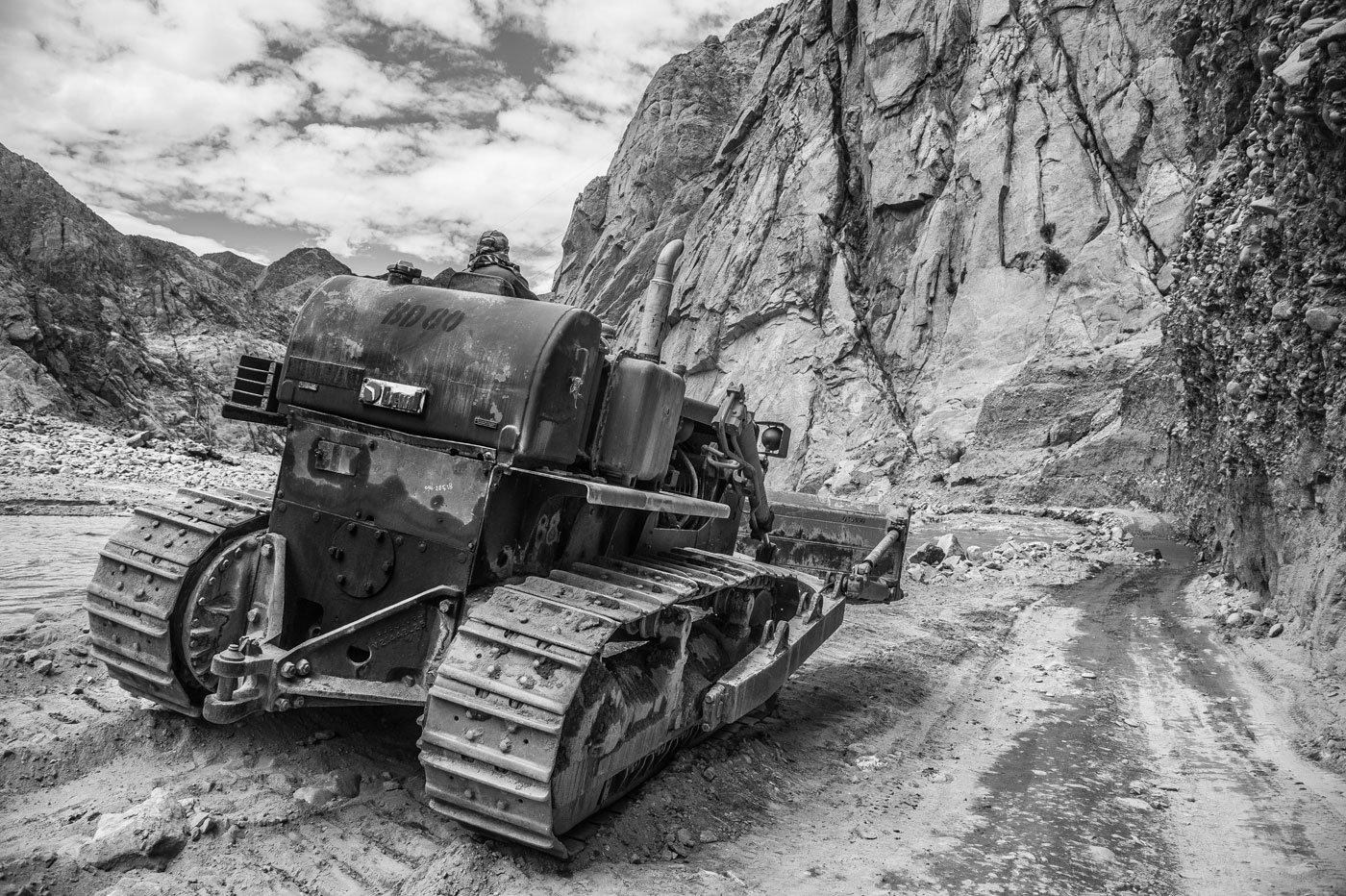
The road between Kiari and Mahe bridge viaChumathang gets damaged whenever the Indus cuts through it at different places. Since it’s a crucial route for army movement, workers are called in to fix the road
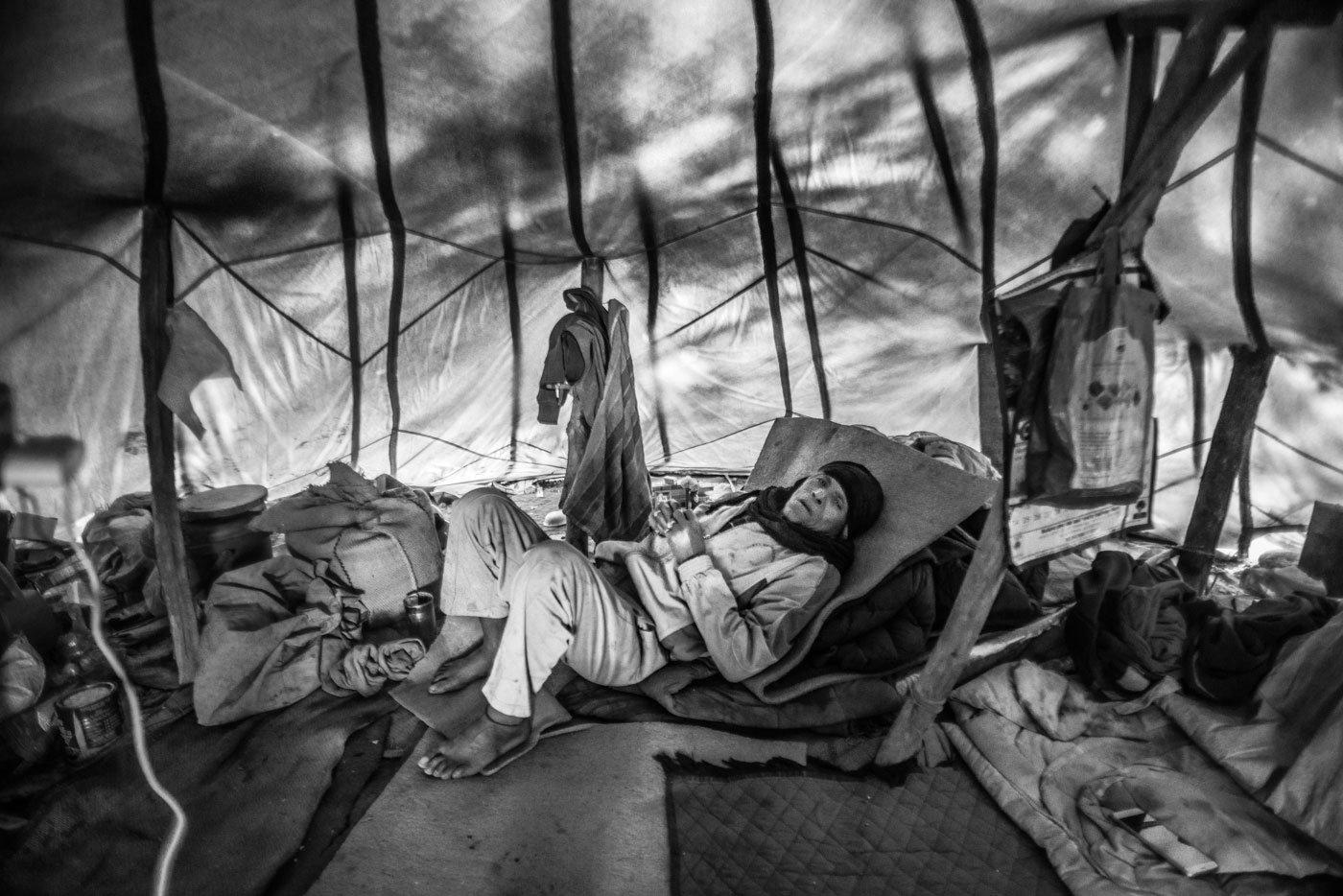
Bhakat Ram is a 53-year-old worker from Koderma district in Jharkhand. He earns Rs. 400 a day, and has been coming here for four years. He dislikes the work conditions and says he does not want to return next year
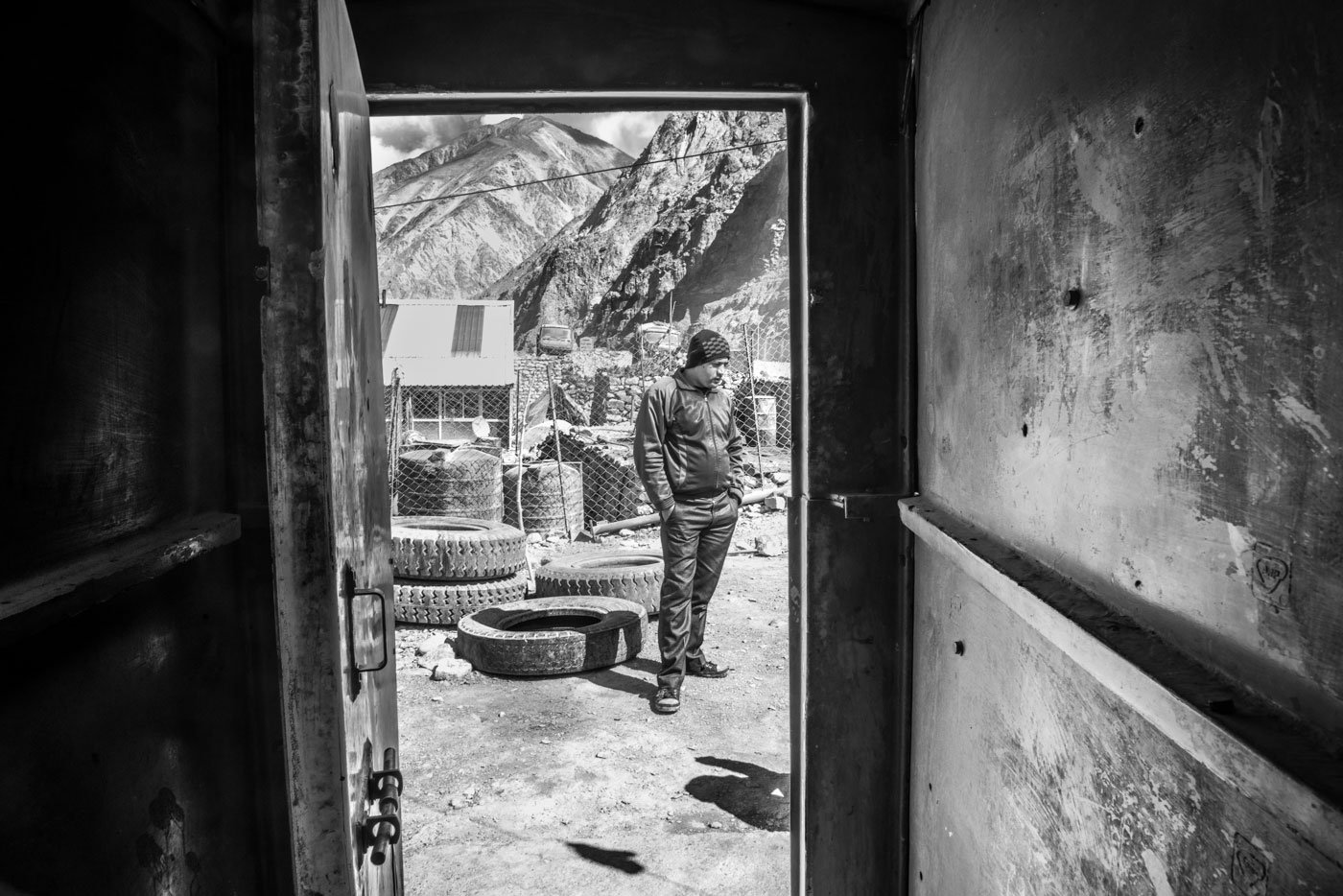
Hamid Ansari, 32, is from Ranchi district in Jharkhand. He completed his contract period on October 10 and was waiting for transportation near Tso Moriri to return to Leh
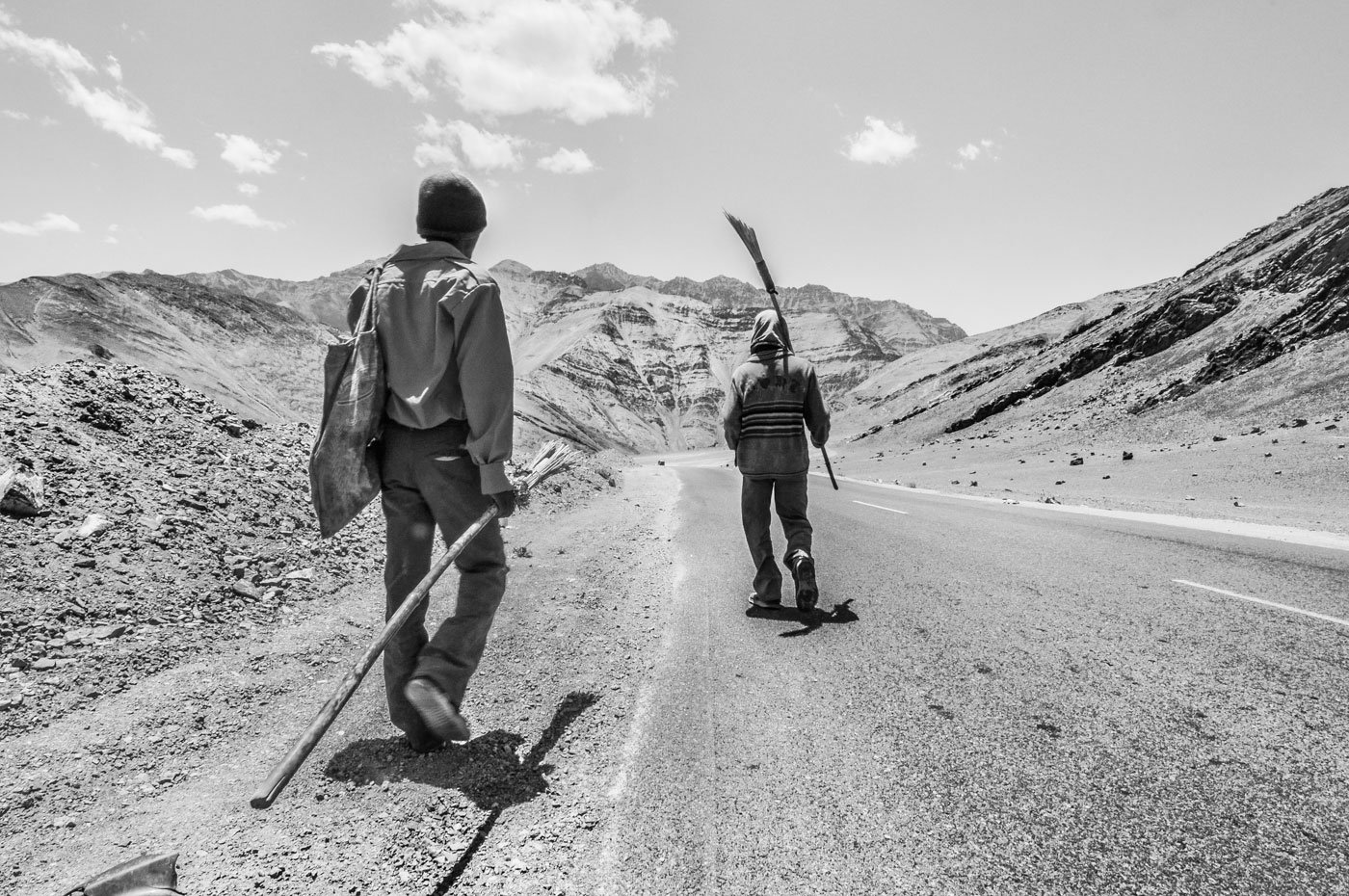
Two workers from Jharkhand walk towards their tent close to the Magnetic Hill as the day ends

